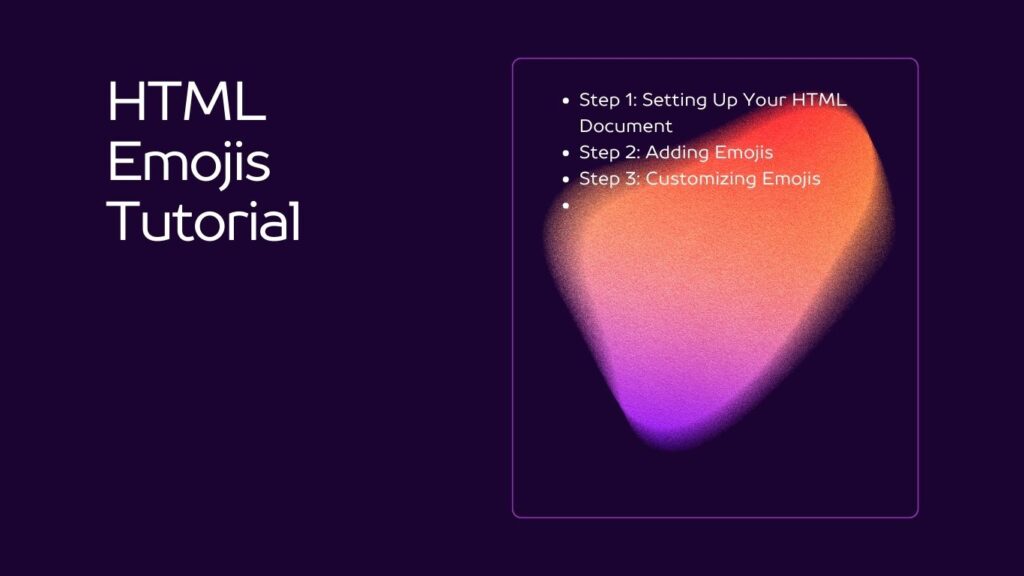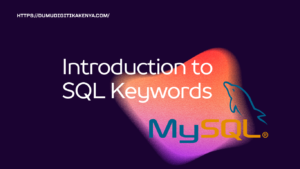Introduction To HTML Emojis
In the ever-evolving landscape of web development, mastering the intricacies of HTML (Hypertext Markup Language) is essential. However, did you know that HTML isn’t limited to text and images alone? In this SEO-friendly tutorial, we’ll delve into the exciting realm of “HTML Emojis.” Emojis have become a universal language of expression in our digital world, and knowing how to incorporate them seamlessly into your web content can take your web design skills to the next level. Whether you’re a budding web developer or an experienced coder looking to add a touch of fun and emotion to your projects, this comprehensive guide will walk you through the process step by step, ensuring that you can master the art of HTML Emojis effortlessly.
Why should you care about HTML Emojis? Emojis offer a visually appealing way to engage your website visitors, convey emotions, and make your content more relatable. Beyond their aesthetic appeal, they can enhance user experience and keep visitors on your site longer. Our tutorial will cover everything you need to know, from the fundamental structure of HTML documents to incorporating emojis using HTML entities and customizing their appearance with CSS. By the end of this tutorial, you’ll not only have a strong grasp of HTML Emojis but also the skills to captivate and delight your audience with creative and expressive web content.
So, whether you’re a curious beginner or a seasoned developer looking to add that extra spark to your websites, fasten your seatbelts as we embark on this exciting journey to explore the world of HTML Emojis. Get ready to bring life, emotion, and a dash of humor to your web pages, all while mastering the basics of web development.

Table of Contents
Step 1: Setting Up Your HTML Document
Let’s begin by creating a basic HTML document. Open your favorite text editor or HTML code editor and start with the following code:
<!DOCTYPE html>
<html>
<head>
<title>HTML Emojis Tutorial</title>
</head>
<body>
<!-- Your content goes here -->
</body>
</html>This code defines the basic structure of an HTML document, including the <html>, <head>, and <body> tags.
Step 2: Adding Emojis
To include emojis in your HTML, you can use Unicode characters or HTML entities. HTML entities are a more accessible option. Here’s an example of how to add a smiley emoji:
<p>Here's a smiley emoji: 😀</p>In this code, 😀 is the HTML entity for the smiley emoji. You can replace it with other emoji HTML entities to display different emojis.
Step 3: Customizing Emojis
You can also change the size and color of your emojis using CSS. Add a <style> block within the <head> section of your HTML:
<head>
<style>
.emoji {
font-size: 24px;
color: red;
}
</style>
</head>Now, you can apply the .emoji class to your emojis:
<p>Here's a big red heart emoji: <span class="emoji">💙</span></p>This code sets the size and color of the heart emoji.
Step 4: Testing Your Web Page
Save your HTML file with an appropriate name, such as “index.html.” Open it in a web browser to see your emojis in action.
Conclusion
In closing, our exploration of “HTML Emojis” has revealed the delightful potential they hold in the world of web development. Emojis, those tiny icons of emotion, can significantly enrich the user experience on your website, making your content more engaging and relatable. By following this comprehensive tutorial, you’ve learned how to seamlessly integrate emojis into your HTML content, whether you’re conveying excitement, love, or even a touch of humor. As you venture forth in your web development journey, you now have a valuable tool at your disposal to captivate and connect with your audience.
The beauty of HTML Emojis lies in their universal appeal. These expressive symbols transcend language barriers, making them a potent means of communication on the internet. By mastering the art of including emojis using HTML entities and customizing their appearance with CSS, you’ve acquired skills that can set your web projects apart. So, embrace the power of HTML Emojis, continue to explore their possibilities, and infuse your web content with emotion and personality, leaving a lasting impression on your visitors.
As you implement HTML Emojis in your web development endeavors, remember that creativity knows no bounds. Experiment, innovate, and have fun with these digital icons, and watch your web pages come to life with vibrant expressions. Thank you for embarking on this journey with us, and we hope you find success and joy in adding HTML Emojis to your arsenal of web development skills.
SEO Tip:
To optimize your web page for search engines, use relevant keywords in your content, meta tags, and headings. Make sure your tutorial is informative and engaging to attract more readers.




